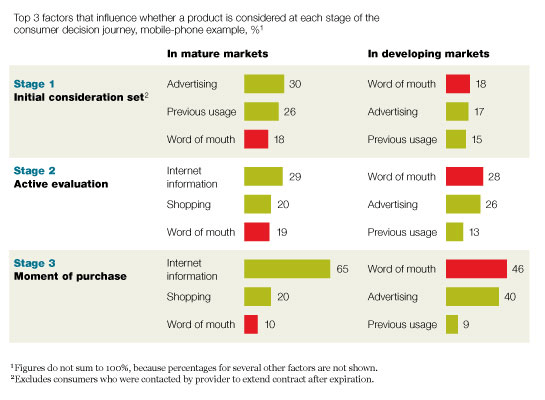There are many different views on SaaS marketing strategies.
Some experts consider it essential and have written long treatises and online guides dedicated to it. Others believe that all marketing strategies are nonsense, and that developers need only to build a great SaaS product to succeed.
Who’s right? Let’s find out.

source: pixabay.com
Can SaaS Сompany Succeed Without Spending a Dime on Marketing?
Сo-founder of Crazy Egg, Hello Bar and KISSmetrics once said,
“Great products, with a strong team behind them, sell themselves.”
In other words, creating a superb product is the best way to sell it – no marketing strategy is necessary. But is this really true?
Well, there are indeed some examples of SaaS companies that achieved success without marketing.
Trello celebrated its 10 millionth user in 2015. What makes Trello so popular is its combination of usefulness and simplicity.

Trello feels comfortable to users, allowing it to be put to work by anyone, regardless of skill level. Maybe a product this good really doesn’t need a marketing plan?
Michael Pryor, CEO of Trello, said,
“We’re confident that building a product people love is the best way to build a successful business.”
He also stated that they didn’t invest in a marketing budget; their “marketing budget” was making the product free. Trello relied entirely on the success of the product itself.
Perhaps if the product is good enough it can in fact grow without additional marketing.
The strategy employed by Trello relies on the phenomenon known as “word of mouth.” Current users of a product find it useful and talk about it with friends and acquaintances. Some of these try it and also like it, so they tell other friends and colleagues, and so on.
Over time, the product becomes more popular and its user base gets larger. Word of mouth can even become viral, resulting in explosive growth.
Naturally, the key to successful growth in this manner is the quality of the SaaS product. No one will recommend something they dislike.
 source: restaurantesysocialmedia.hol.es
source: restaurantesysocialmedia.hol.es
According to statistics, word of mouth is the most important factor in buying decisions.
- 91% of B2B purchasers said that their buying decisions were influenced by word of mouth.
- 56% of B2B purchasers look to offline word of mouth sources for information and advice. For online purchases, this number jumps to 88%.
 source: mckinsey.com
source: mckinsey.com
Another example of the “awesome product” marketing strategy is Pipedrive. Founded in 2010, it now has over $30 million in funding, and more than 30,000 customers.
According to Pipedrive’s current head of marketing, Andrus Purde, Pipedrive got to 10,000 users without any marketing. The company got the job done without emails and blog posts, just by making a great product that solved users’ problems.
Fred Wilson, co-founder of Union Square Ventures, says,
“Marketing is for companies who have sucky products. If you build something that is amazing people will adopt it because it is amazing. And you won’t have to do much marketing, at least at the start.”
So, it seems that it’s possible to build a successful SaaS company without marketing.
It appears that having a great SaaS product can be enough.
The Great “No Marketing” Hoax
Now let’s look at things from the other side.
Even those who say that they do no marketing do not completely neglect it.
How Can Kraftblick Help Your Software Company?

- We build marketing strategies from scratch and fix existing ones. More about that here.
- We provide consultations to company owners, directors, heads of marketing and sales, marketers. This is how we do it.
See you soon 🙂
Despite Neil Patel’s words – “Great products, with a strong team behind them, sell themselves” – he is a marketer.
Neil wrote “The Complete Guide to Building Your Personal Brand,” where he highlighted the phenomenon of branding. In this manual he also listed the main ways to make your company a brand.
Why should a company build a strong brand if it just can build a great product? After all, according to his words, “the best products sell themselves.”
Here is another Patel’s quote that says something about his real attitude towards marketing.
“To get the best results, you need to take a proactive and strategic approach to your marketing.”
This indicates that Patel understands that creating a great product is not enough to compete successfully.
If two companies with superb products compete, which will win? Of course, the one that doesn’t neglect marketing.
Marketing is an efficient means of turning your company into a brand, and Mr.Patel understands it very well.

source:pixabay.com
“‘It’s all about the product.’ Have you ever heard that if you build a product that’s good enough, you’ll win? Here’s the thing: products don’t win. Businesses do”
says Alex Turnbull, founder and CEO of Groove.
Let’s look at an interesting example of the Navilytics company. Its founder and developer, Conner Hewitt, built a web analytics tool that didn’t succeed.
In his outspoken post, “The Most Important Lesson of Building and Running My Own SaaS Startup,” he confesses that his most important failure was believing that if he built an amazing product, it would sell itself.
Shortly after the release of his product he learned that he had a competitor called Hotjar. Hotjar offered a product with similarly high quality, and was released at the same time as Navilytics. The only significant difference between them was that Hotjar was engaged in marketing even before the release of their product, such as social media ads, email and content marketing.
Hewitt admits,
“This was genius. It was so creative and worked so well, in fact, that people have blogged about it, and you see this strategy being used now by a large number of startups.”
By the time Hotjar finished their beta period, they already had almost 60,000 subscribers.
At the time that Hewitt’s post was published, January 21, 2017, his Navilytics tool had only 600 to 700 users, compared to 200,000 for Hotjar.
One of the most important conclusions that Hewitt draws at the end of his post is, “Focus everything around marketing, not your product.”
Therefore, companies that claim they require no marketing strategies are cunning.
Let’s go back to Trello. Michael Pryor said that users market their product. But later he stated, “Up until recently our marketing was almost 100% organic. It wasn’t until about a year ago that we started focusing our marketing and hiring a marketing team. A few months ago we hired a CMO.”
It seems that even companies that rely on product quality eventually hire marketing people; they stop relying solely on word of mouth.
Perhaps no one really takes the “just build an awesome product” strategy seriously.
Something to Keep in Mind
Many people believe that making a superb SaaS product is sufficient to achieve success. It is true that creating a useful and user-friendly software is essential, because people won’t use or recommend a tool they don’t like.
But the strategy of “just building an awesome product” isn’t effective. Even those who say it often take actions that contradict their words.
Here are a few interesting summary thoughts to take away from this article:
Do you believe that awesome SaaS products do the self-promotion job, so no SaaS marketing is needed? Or are you the fan of the “marketing comes first” approach?
Let us know what you think!